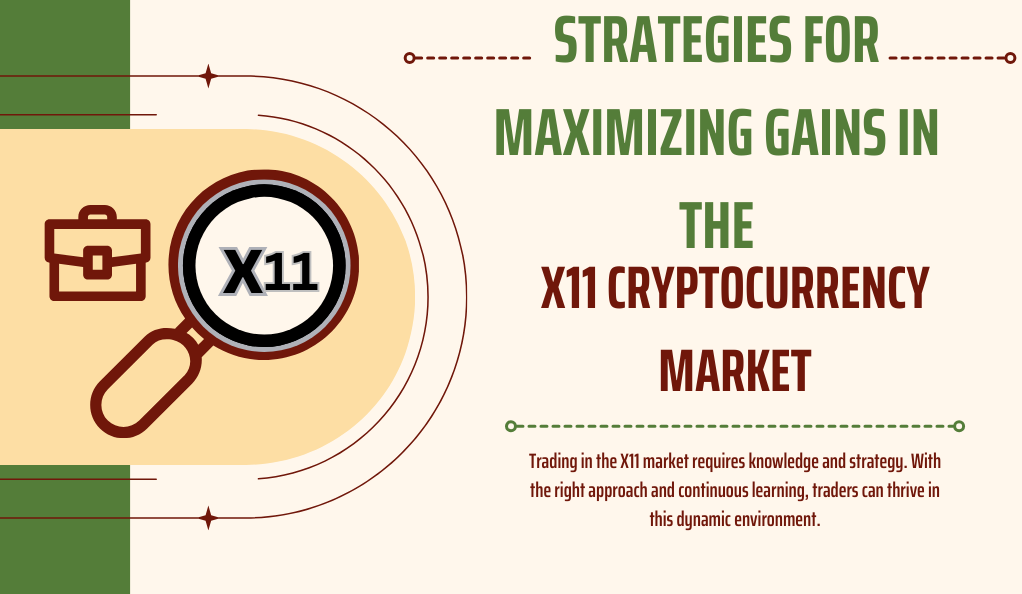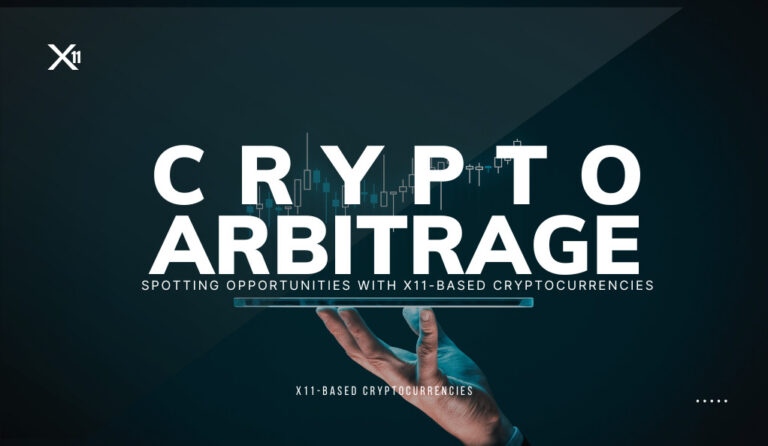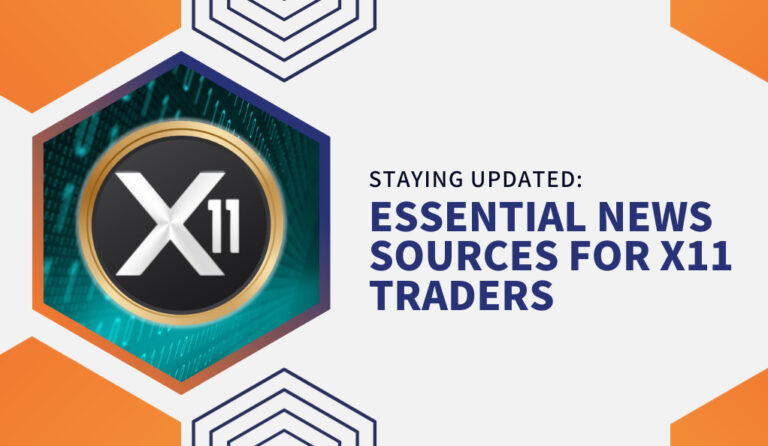The world of cryptocurrencies is vast, diverse, and ever-evolving. Among the myriad of algorithms and coins that populate this landscape, the X11 algorithm stands out as a unique and intriguing player. This introduction aims to provide a comprehensive overview of the X11 cryptocurrency market and underscore the importance of understanding order types to maximize gains.
What is the X11 Algorithm?
The X11 algorithm is not just a single hashing function but a combination of 11 different scientific hashing functions. These are: Blake, BMW, Groestl, JH, Keccak, Skein, Luffa, Cubehash, Shavite, Simd, and Echo. This multi-layered approach offers enhanced security and makes it more resistant to vulnerabilities.
Why X11 Stands Out?
The X11 algorithm offers several advantages over other hashing algorithms:
- Security: The use of 11 different hashing functions reduces the risk of vulnerabilities.
- Energy Efficiency: X11 is known to consume less power, making it more eco-friendly.
- Wider Adoption: Several coins, including the popular Dash (DASH), utilize the X11 algorithm.
The Importance of Understanding Order Types
In the X11 cryptocurrency market, as with any other market, the type of order you place can significantly impact your potential gains. Whether you’re looking to buy or sell, understanding the nuances of different order types can be the difference between making a profit and incurring a loss. As we delve deeper into this topic in subsequent sections, we’ll explore market orders, limit orders, stop orders, and more, providing you with the tools and knowledge to navigate the X11 market confidently.
Understanding Order Types in the X11 Cryptocurrency Market
Navigating the X11 cryptocurrency market requires not only an understanding of the algorithm and its coins but also a mastery of the various order types available to traders. These order types determine how your trades are executed, and choosing the right one can significantly impact your trading outcomes.
Market Orders
A market order is the most straightforward type of order. When you place a market order, you’re essentially saying, “I want to buy or sell this cryptocurrency at the best available price right now.”
Pros:
- Immediate Execution: Market orders are typically filled quickly.
- Simplicity: No need to set a specific price; you get the current market rate.
Cons:
- Price Uncertainty: The final executed price might be different from the price when the order was placed, especially in volatile markets.
Limit Orders
With a limit order, you set a specific price at which you want to buy or sell. The trade will only be executed if the market reaches your set price.
Pros:
- Price Control: You determine the price point, ensuring no surprises.
- Cost Efficiency: Can prevent buying too high or selling too low.
Cons:
- No Guarantee: The order might not be executed if the market doesn’t reach your set price.
Stop Orders
A stop order is a two-part order. It becomes active once a specific price (the stop price) is reached. Once active, it can act as a market or limit order.
Pros:
- Protection: Can limit losses in declining markets.
- Profit Locking: Can secure profits in rising markets.
Cons:
- Slippage: The final executed price might differ from the stop price, especially in fast-moving markets.
Conditional Orders
These are advanced order types that get executed based on predefined criteria or conditions, combining aspects of the above order types.
Pros:
- Flexibility: Allows for complex trading strategies.
- Automation: Set it and forget it; the order does the work once conditions are met.
Cons:
- Complexity: Not suitable for beginners; requires a deeper understanding of the market.
Strategies for Maximizing Gains in the X11 Cryptocurrency Market

The X11 cryptocurrency market, like any other financial market, requires a blend of knowledge, intuition, and strategy to navigate successfully. While understanding the order types is fundamental, implementing effective trading strategies can be the difference between consistent gains and sporadic successes. Here, we’ll explore some of the most effective strategies tailored for the X11 market.
Timing the Market with Technical Analysis
Technical Analysis (TA) involves studying past market data, primarily price and volume, to forecast future price movements. This analysis can be performed on any security with historical trading data.
Key Components of TA:
- Charts: The most basic tool for a technical analyst is a price chart. The most popular types are line charts, bar charts, and candlestick charts.
- Indicators & Patterns: These include Moving Averages, Bollinger Bands, MACD, and the Relative Strength Index (RSI).
Application: By identifying patterns like ‘head and shoulders’ or understanding indicators like RSI, traders can predict potential price movements and make informed decisions.
Portfolio Diversification
Never put all your eggs in one basket. Diversifying your investments across various X11 cryptocurrencies can help spread and mitigate risks.
Benefits:
- Risk Management: If one asset underperforms, others might perform well, balancing the portfolio.
- Potential for Higher Returns: Diversification allows investors to earn from the best-performing assets in their portfolio.
Setting Stop-Loss and Take-Profit Points
By predetermining stop-loss and take-profit points, traders can automate their exit strategy, ensuring they lock in profits or minimize losses.
Benefits:
- Emotion-free Trading: Helps in avoiding impulsive decisions based on fear or greed.
- Risk Management: Ensures that potential losses are kept within acceptable limits.
Staying Informed
The cryptocurrency market is highly dynamic. Staying updated with the latest news, technological advancements, regulatory changes, and market trends is crucial.
Tips:
- Follow Reputable News Sources: Websites, podcasts, and news channels dedicated to cryptocurrencies.
- Join Online Communities: Forums, social media groups, and chat platforms where traders discuss the latest market trends.
Long-Term Holding (HODLing)
Derived from a misspelled word “hold,” HODLing refers to buying and holding onto a cryptocurrency for a long time, regardless of market volatility.
Benefits:
- Potential for Higher Returns: Historically, long-term investments in solid assets have yielded significant returns.
- Less Stress: Avoids the daily stress of market fluctuations.
Using Advanced Order Types
As discussed in the previous section, using conditional orders or combining different order types can help in automating trading strategies, ensuring timely execution without constant market monitoring.
Risks and Considerations in the X11 Cryptocurrency Market

While the X11 cryptocurrency market offers numerous opportunities for traders, it’s essential to be aware of the inherent risks. Understanding these risks and taking proactive measures can help traders make informed decisions and protect their investments.
1. Market Volatility
The cryptocurrency market is known for its high volatility. Prices can skyrocket, but they can also plummet in a short period.
Mitigation Strategies:
- Diversify Investments: Spreading investments across multiple assets can help mitigate the impact of volatility on the overall portfolio.
- Set Stop-Loss Points: This ensures that you limit potential losses during sudden market downturns.
2. Security Concerns
With the rise of cryptocurrencies, there’s been an increase in cyberattacks, including hacking of exchanges and wallets.
Mitigation Strategies:
- Use Hardware Wallets: These are physical devices that store private keys offline, making them immune to online hacks.
- Enable Two-Factor Authentication: Adds an extra layer of security to your online accounts.
3. Regulatory Challenges
The legal landscape for cryptocurrencies is still evolving. Changes in regulations or government policies can impact the market.
Mitigation Strategies:
- Stay Updated: Regularly follow news related to cryptocurrency regulations in your country.
- Diversify Geographically: Consider investing in cryptocurrencies that are popular in regions with stable regulatory environments.
4. Technological Risks
Issues like software bugs or a lack of technological updates can affect a cryptocurrency’s performance and security.
Mitigation Strategies:
- Research Before Investing: Understand the technological foundation of a cryptocurrency before investing.
- Follow Development Communities: Stay updated with the latest technological advancements and updates.
5. Market Manipulation
“Whales,” or large holders of cryptocurrency coins, have the capacity to manipulate currency valuations. Accordingly, drastic price changes can result from large players’ actions.
Mitigation Strategies:
- Diversify Investments: Avoid putting all your capital into one cryptocurrency.
- Stay Informed: Be aware of market trends and potential manipulative actions.
6. Limited Adoption
While cryptocurrencies are gaining traction, they’re still not universally accepted. Limited adoption can affect liquidity and market stability.
Mitigation Strategies:
- Invest in Established Cryptocurrencies: Coins with broader adoption and recognition are generally more stable.
- Promote Cryptocurrency Awareness: The more people understand and use cryptocurrencies, the more stable the market will become.
Conclusion
The X11 cryptocurrency market, defined by its unique 11-function algorithm, emphasizes the importance of understanding various order types for effective trading. While strategies can enhance gains, traders must be aware of risks like market volatility and security threats. Continual learning from trusted sources, community engagement, and occasional professional advice can guide traders in this dynamic market. The X11 landscape, though complex, offers informed traders ample opportunities.
At axerunners.com, our goal is to furnish well-rounded and trustworthy information regarding cryptocurrency, finance, trading, and stocks. Nonetheless, we avoid providing financial advice and instead encourage users to conduct their own research and meticulous verification.
Read More












